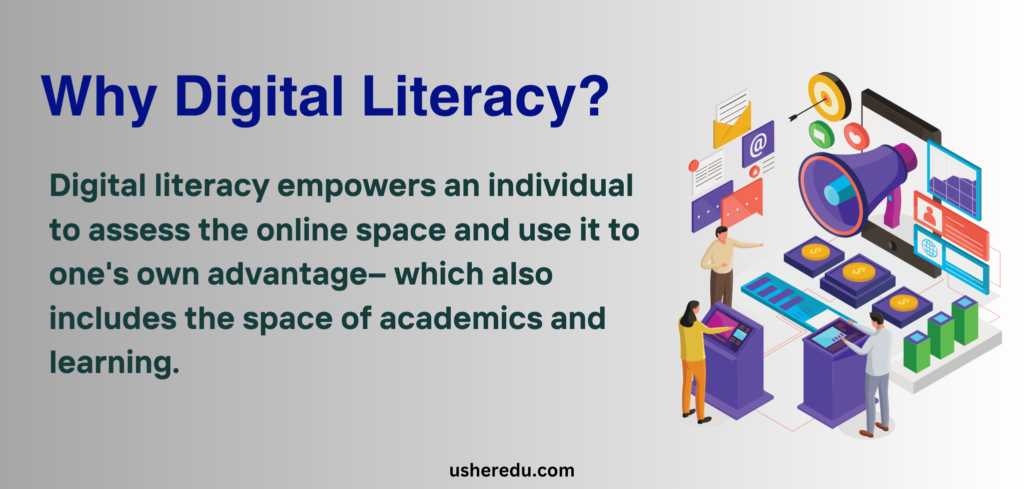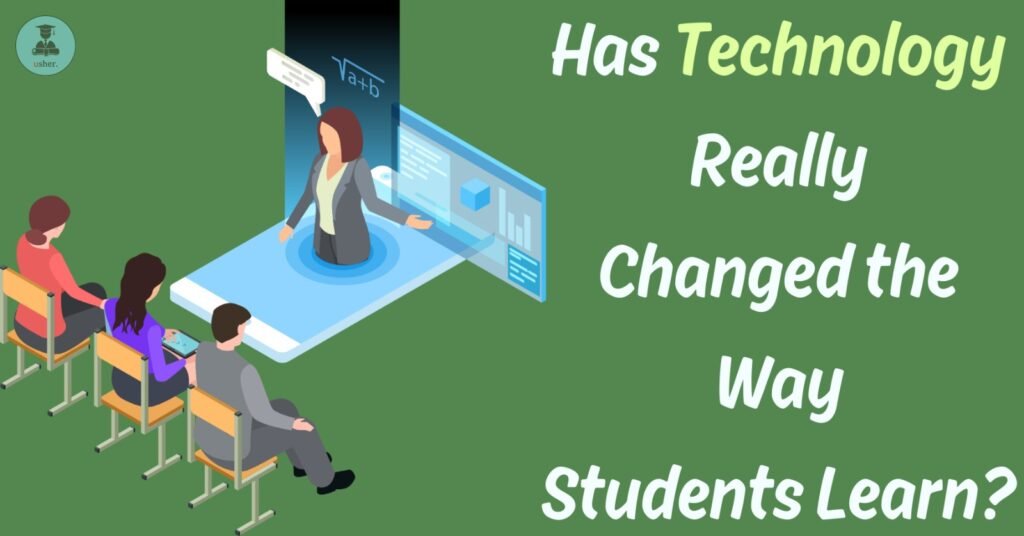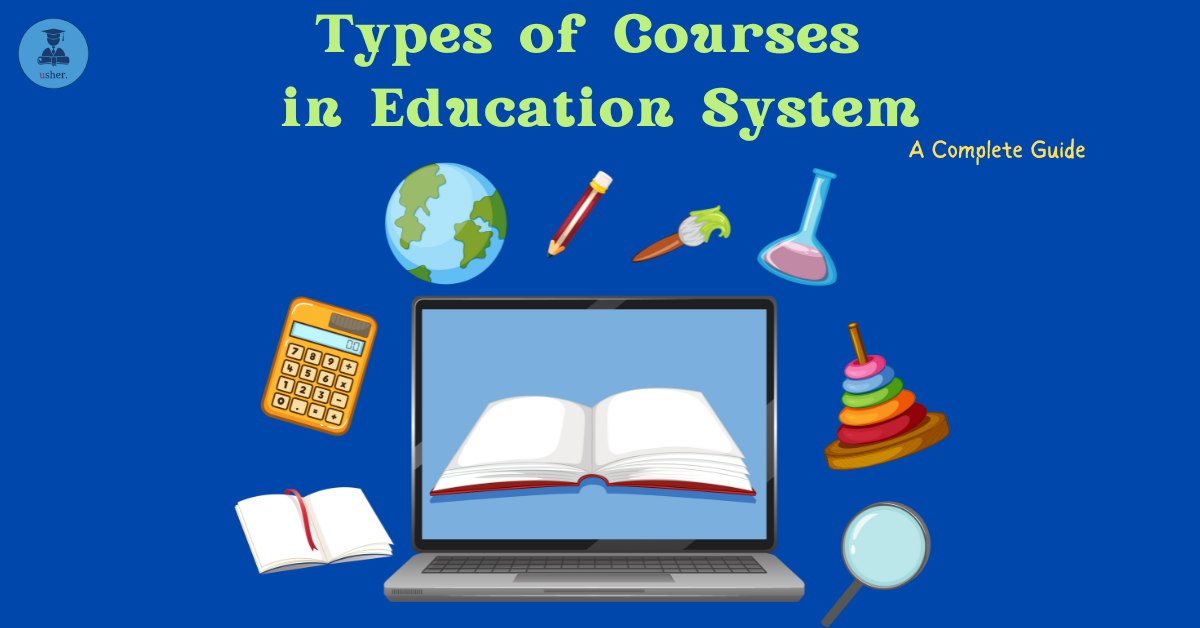Have you wondered, the ways in which technology revolves around us, or the ways in which we revolve around it?
Technology has undoubtedly woven itself into every corner of our lives– in so many ways we are dependent on technology,
From scrolling on social media and online shopping to the making of a vast knowledge-based economy. Technology has done it all! .
This wave of technology has been a game changer as it has enhanced all forms of industries- including education.
Education has evolved greatly to meet the needs of students, parents and teachers alike due to the driving force of technology – the very pillar of the future of academics.
The rise of technology has revolutionized education and has enhanced the existing teaching methods, while ensuring that is not completely replaced.
We can all probably agree that in this century of technological advancements in education, a seamless, effective, and well-organized structure and environment are essential to enhancing the educational experience of young students.
It gives students unlimited exposure and new chances. This expansion of chances and exposure, together with the amount of information on scholarly works, communication methods, and online study circles, increases the global student network and empowers students to learn.
So, Keep reading to find out the various ways in which technology influences learning and how you can employ technology and the digital space to effectively enhance your learning process, to make yourself prepared for the digital world.
Benefits of Technology in Learning
Research and evaluation by Center for Applied Research in Educational Technology (CARET) shows that technology tools for constructing artifacts and electronic information and communication resources support the development of higher-order thinking skills, among other findings that suggest that technology provides various tools and ways in which learning is enhanced among students of varying age groups.
The advantages of implementation of digital technologies in the education sector as well as in personalized learning processes are many!
Let’s look at some of these advantages.
Accessibility to Information and Cost Effective Resources
One of the primary advantages of digital learning is the accessibility to information and the way in which the internet provides a cost free global library with any and every information available
Cost-friendly academic sites
These sites provide access to students, academic journals as well as scholarly works of teachers, professors and learned individuals across various fields. Sites such as Google Scholar, Wikipedia, JSTOR, are great examples of such sites. Various other online encyclopedias and other online libraries too exist in abundance, and can provide assistance in studying.
Online Distance learning
This accessibility to information and education on one’s fingertips has also resulted in the emergence of Online Distance learning (ODL) courses that enable students to attend school/college via online means and receive their degree without having to attend physical classes.
- This facilitates those sections of the society that are financially weaker as these ODL courses are usually more economically feasible. Careers360 provides an extensive blog on the benefits of ODL for financially weaker sections of society.
- The Government of India with its New National Education Policy 2020, has placed emphasis on facilitating a smoother and efficient process of Online Distance Learning in combination with physical learning and courses, keeping the interests of the intermediate classes of the society in mind.
Diversification of the learning space
Digitization of education also results in the diversifying of the educational space. Students can collaborate with other students of different institutions, disciplines, ethnic or national backgrounds.
Multi-disciplinary approach
This multidisciplinary approach aids in the diversification of knowledge as a whole and allows students to partake in discourse and discussions that extends beyond their own specific field of study or subject.
Inclusivity
Thus, opening up to diverse people, professions, knowledge and opportunities. This leads to their growth as a student as well as a person and results in the development of their perception of the society and the world around them.
- Technology opens up space for awareness and sensitisation to other cultures, ethnic or gender identities– thus, making education more inclusive and easily accessible by people of all cultural, gender or financial identities.
- Technology strengthens inclusivity in education by providing a more diverse and inclusive space, providing learning as well as socially enriching opportunities for people from marginalized communities.
Increased Knowledge of Digital Literacy
The Introduction to technology in learning also results in an increased digital literacy, that is, the ability to understand, and produce information using digital technologies.
It constitutes various skills that enable a person to utilize the digital services, platforms and tools in diverse and productive ways.
Basic Digital skills
It can encompass basic computer skills, use of software, knowledge of Ai technology and other digital services.
Media literacy
It also includes media literacy, that is the ability to interpret, understand and analyze the various forms of media available on the Internet, such as audios, images and videos etc.
- Media literacy involves understanding any potential biases, various perspectives and understanding the message it’s trying to convey.

Therefore, it basically empowers a student to develop the ability to locate, evaluate and use information to their best advantage from the various digital sources and websites available.
Universal and flexible learning process
By now we understand that technology in Education allows students to effectively use the space to utilize it for learning even beyond the classroom hours. This is done so by providing a learning source that is available 24×7 for access, thus, adding a flexible alternative to learning where students can learn on their own schedule and in the comfort of their homes.
This is facilitated by the use of various online courses, webinars and other resources that facilitate the distribution of knowledge to a greater mass and section of the society.
This detached form of learning also allows students to study without any social pressure and with greater emphasis on academics itself.
Personalized Learning
Technology and the online space works with an algorithm, this is beneficial for the student as the educational content is tailored to the students needs, syllabus or academic material– based on their online searches.
- The use of data analytics by various flexible and adaptive learning platforms helps in the personal customisation of the educational material to fit the student’s need.
- This process adjusts the curriculum to the preferences and comfort as well as the pace of learning of the student.
- Such advancements in personalisation of the learning process via technology helps in providing a learning space that meets the unique needs of students who have unique learning styles and patterns. Thus, providing a more customisable and effective learning process.
- This allows students to learn at their own pace, focus on areas where they need more practice, and explore subjects that interest them the most.
Collaboration and Communication
Technology also empowers the three important members of the learning process, that is, the student, teacher and the parent/guardian to be equally invested in the educational process.
- Usage of online conference apps, helps by enabling teachers to hold regular meetings with the guardians of the wards to discuss the student’s strengths and weaknesses and therefore, collaborate together to achieve what is in the best interest of the student.
- Other than video conference tools, learning management systems and online forums of parents, teachers and students enable the intersection of these three participants and lead to greater communication among the three parties.
- This increased connectivity helps in building a healthy environment where the pressure is divided among the three parties and they can engage actively to guide and assist the student by allowing discussions and project collaborations as well as parent-teacher communication that enhances the educational experience and the process of learning and provides support to the student.
Effective system of Assessment and Feedback
The old cumbersome methods of traditional assessment are now being replaced by newer tools of assessment that are quick, easy and reliable. This aids teachers, researchers, professors and event students to gain quick assessment of their performance and give/receive feedback.
- Online Quizzes, uses of Google forms or other survey/testing websites enable faculty members to administer efficient tests and examination procedures via virtual and technological means,thus providing a more efficient alternative to the pen and paper method.
- In India, major competitive examinations conducted by the National Testing Agency are administered through computer-based tests, subsequently the assessment, feedback and the result being provided on the student’s profile and dashboard on the official website/s.
- Some of these tests are Common University Entrance Test (CUET), (Joint Entrance Examination) JEE, NEET-UG, UGC-NET amongst others.
Learning of Practical Skills
The exposure to technology and the digital space also allows students to learn real life applications and skills that are gaining high demand in the market.
- Digital market Skills:- Skills such as Social media/Digital Marketing, Coding, softwares, digital tools etc. prepares them to meet the growing demands of the market and its various industries.
- Creative development: It also enables them to venture into more creative fields and develop their creative skills, such as painting, singing or playing an instrument with the use of various online courses and tutorials on YouTube. This also results in a more holistic form of learning and education that is easily accessible.
Ways to effectively employ technology in learning
The influence of technology on learning has been positive in recent times due to the availability of various tools and services and creative methods that empower education through digital means.
Let us explore the ways in which technology has been incorporated into our educational experiences in recent years.
Role of Artificial intelligence in learning
The use of Artificial intelligence is an incredible example of the recent development in the digital space and how people can utilize it for their academic benefit.
- Ai Chatbots: The use of AI chatbot services such as ChatGPT, Google Bard, Bing chat provide assistance to students when it comes to their syllabus, assignments, exams and projects by answering their queries as well as providing different information from different sources on a topic all at one place.
- Instant Information and feedback: This well organized and fast delivery of information makes research and studying efficient as well as quick for the student. The vast, detailed yet well structured information helps the student to learn, organize and grasp the information easily.
- Personalized learning and access to information: The efficient nature of Artificial intelligence enables the student to access specific answers to questions and other specific curriculum-related information at once by using detailed prompts effectively.
- Edtech revolutions: The use of AI in educational technology has resulted in the creation of advanced intelligent platforms and softwares that are based on augmented reality, virtual reality and artificial intelligence that work together to provide an immersive and futuristic learning experience for the student.
- Increased Access to Students with Disabilities: AI empowers students who often have a difficult time adjusting in the traditional schooling setting by providing them a fast, quick and highly advanced information structure which can cater to the unique tutoring needs for a student with disability, such as hearing or visual impairment by providing AI-driven converter tools like presentation translators that provide real-time subtitles for virtual lectures.
- Efficient Assessment: AI integrated systems can be used for efficient grading of assignments, tests and projects. This empowers teachers, professors and tutors to grade students in a quick and easy manner. AI algorithms can also be used for automated scoring of essays and other materials or assignments that are vast. This form of assessment is consistent and unbiased. Such Ai empowered grading systems can be employed in examinations to ensure a secure, unbiased and efficient grading of tests.
- 24/7 Access to Education and Teaching: AI systems have the capacity to support learning outside of regular school hours. The provision of resources, study materials, and tutoring support to students at their convenience promotes ongoing engagement with academic content. The availability of educational information, lectures, and study materials at any time enables students to review or consolidate knowledge at their convenience.
- Creative Learning: Various AI integrated content creation tools can be used by teachers to formulate creative and interactive visual material to assist students in learning in a fun and appealing way. AI powered tools can also create visual representation of information “in a nutshell” which is easy to understand as well as engaging. These materials are usually compatible with multiple devices, thus making AI powered learning incredibly accessible and inclusive.
- Inclusive Learning through AI: AI contributes immensely in the making of education into a more global, inclusive and shared experience that benefits people of all regions gender, class, linguistic or ethnic or backgrounds equally. AI driven educational tools are backed up by multilingual support that can cater to the needs of students as well as teachers from diverse backgrounds.
- Fun learning: AI powered tools can also be used by educators to create fun and interactive learning games, puzzles and quizzes to make studying and learning fun and engaging. These AI-driven games can increase a student’s interest in learning by providing them a more immersive experience. Using Ai integrated games can be a fun way to introduce toddlers and younger children to studying.
Podcasts and auditory learning
Technological advancements in auditory media can be utilized effectively for learning and memorizing of information as audios are proven to make the process of memorization easier.
- Students can seek to listen to educational podcasts on topics of their syllabus or of their own choice to help garner a greater understanding and knowledge of the said topic.
- Auditory learning facilitates a faster and quicker process of attaining knowledge and information.
- Podcasts or speaker circles also help in the development of conversational skills and the art of discourse and discussions– this helps in building confidence, a strong wit, presence of mind and personality, which are crucial to a holistic form of education.
Virtual learning environments
The use of virtual rooms and lectures with the use of apps such as Zoom, Google Meet facilitates the exchange of information and knowledge from the comfort of our respective homes.
- This makes both the learning as well as the teaching experience much more efficient and flexible.
- Meeting deadlines and addressing queries outside of school/college hours directly from experts, professors and teachers, becomes more easy and flexible.
- This setting enables real-time interaction between the participants, making the learning process more enriching.
- Blended Learning: Blended learning enables teachers and faculty members to integrate a more flexible model of teaching that employs both the traditional face-to-face classroom and the virtual conference setting. Such a blend of learning models result in greater efficiency in deploying lectures and other academic material to the students at flexible hours.
Educational apps and softwares
One can employ the usage of apps, websites and softwares that are specifically targeted to meet the needs of students and empower their learning process.
There is an abundance of apps centered around organisational skills, personal development, interpersonal intelligence, study guide and assistance, encyclopedia or academic apps/websites that provide resources for studying.
A few examples of apps and sites that assist the process of learning are:-
- Pomofocus: Pomofocus provides a customisable timer based on the Pomodoro Technique to facilitate undisturbed studying.
- Duolingo: Another popular app for the effective learning of languages across the globe, as linguistic skills and holistic development are becoming central to education goals
- Udemy: Udemy is a revolutionary Ed Tech teaching and learning platform that enables flexible educational courses on various skills, with focus on personal and professional development.
- Unacademy and Byjus: These are popular tutoring apps that provide extensive video lectures on the academic syllabus, usually for school students.
- Google Classroom: Apps such as Google Classroom also facilitate the communication between students and teachers outside the physical classroom setting. This app enables teachers to take in assignment submissions, tests, homeworks and carry out classwork in the virtual sphere.
Conclusion
Indeed, from the various aspects that we have touched upon in this blog, we get a greater understanding of how to employ technology for the best of the future generation and their educational aspirations. It is also important to acknowledge and recognise that the overdependence on anything can have adverse effects, however, when employed in a constrained setting, technology can result in great benefits for every student!
Technology is a very strong tool and its merging with education can indeed serve as the basis of future learning.
When utilized in a controlled and moderated setting with supervised and a healthy screen time schedule, it is certain that technology and the digitalization of learning can result in the success of the student in a holistic form of education; while simultaneously making the learning process more flexible, inclusive,efficient and feasible.




